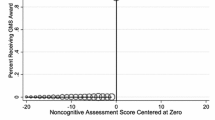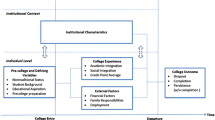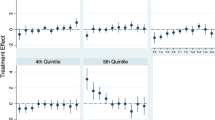Abstract
This study analyzed the impact of specific types of financial aid on students' college choice, with particular focus on racial differences. For overall student populations, the receipt of grants or a combination of grants with loans had a positive impact on attending first choice institutions. In contrast, having loans only had no significant impact. Going one step further, distinct patterns were found in the effects of financial aid on college choice by racial groups. White students were more likely to attend their first-choice institutions if they received grants or a combination of grants with loans. Asian American students were strongly influenced by having loans or a combination of grants with loans when they decided to attend their first choice of colleges. In contrast, college choices of Latino and African American students were not influenced by financial aid. Implications of the findings for financial aid policy are indicated and future research on the topics recommended.
Similar content being viewed by others
REFERENCES
Astin, A. W. (1993). What Matters in College: Four Critical Years Revisited, Jossey-Bass, San Francisco.
Cabrera, A. F. (1994). Logistic regression analysis in higher education: An applied perspective. In: Smart, J. C. (ed.), Higher Education: Handbook of Theory and Research (Vol. 10), Agathon Press, New York, pp. 225–256.
Cabrera, A. F., and La Nasa, S. M. (2000). Understanding the college choice of disadvantaged students. In: Cabrera, A. F., and La Nasa, S. M. (ed.), New Directions for Institutional Research, Jossey-Bass, San Francisco.
Chapman, R. G., and Jackson, R. (1987). College Choices of Academically Able Students: The Influence of No-Need Financial Aid and Other Factors, College Entrance Examination Board, New York.
College Board, The (1999). Trends in Student Aid, Author, Washington, DC.
Gilmour, J. E., Jr., Spiro, L. M., and Dolich, I. J. (1978). How High School Students Select a College, Pennsylvania State University, College Station, PA.
Gladieux, L. E., and Swail, W. S. (1999). Financial aid is not enough. In: King, J. E. (ed.), Financing a College Education: How It Works, How It's Changing, American Council on Education, Oryx Press, Westport, CT.
Hagedorn, L. S., and Fogel, S. F. (2002). Making school to college programs work: Academics, goals, and aspirations. In: Tierney, W. G., and Hagedorn, L. S. (eds.), Extending Their Reach: Strategies for Increasing Access to College, State University of New York Press, Albany.
Hearn, J. C. (1991). Academic and nonacademic influences on the college destinations of 1980 high school graduates. Sociology of Education 64: 158.
Heller, D. E. (1998, November). A comparison of the tuition price and financial aid responsiveness of first-time enrollees and continuing college students. Paper presented at the annual meeting of the Association for the Study of Higher Education, Miami, FL.
Heller, D. E. (2000). The role of race and gender in the awarding of institutional financial aid. Paper presented at the annual meeting of the American Educational Research Association. New Orleans.
Hossler, D. (2000). The role of financial aid and enrollment management. In: Loomes, M. (ed.), The Role of Financial Aid in Enrollment Management, New Directions in Student Affairs, No. 89. Jossey-Bass, San Francisco, pp. 77–90.
Hossler, D., Braxton, J., and Coopersmith, G. (1989). Understanding student college choice. In: Smart, J. C. (ed.), Higher Education: Handbook of Theory and Research (Vol. 5), Agathon Press, New York, pp. 231–288.
Hossler, D., and Gallagher, L. (1987). Studying college choice: A three-phase model and the implication for policy makers. College and University 2: 207–221.
Hossler, D., Schmit, J., and Vesper, N. (1999). Going to College: How Social, Economic, and Educational Factors Influence the Decisions Students Make, The Johns Hopkins University Press, Baltimore and London.
Hu, S., and Hossler, D. (2000). Willingness to pay and preference for private institutions. Research in Higher Education 41: 685–701.
Hurtado, S., Inkelas, K. K., Briggs, C., and Rhee, B.S. (1997). Differences in college access and choice among racial/ethnic groups: Identifying continuing barriers. Research in Higher Education 38: 43–75.
Jackson, G. A. (1978). Financial aid and student enrollment. Journal of Higher Education 49: 549–574.
Jackson, G. A. (1990, August). Financial aid, college entry, and affirmative action. American Journal of Education 523–550.
Kim, D. (2002, June). Does attending a first choice college matter in student success? Findings presented at the annual AIR/NCES/NSF Summer data policy institute, Washington, DC.
Kleinbaum, D. G., Kupper, L. L., & Muller, K. E. (1988). Applied Regression Analysis and Other Multivariate Methods (2nd Ed.), PWS-KENT Publishing Company, Boston.
Leslie, L., and Brinkman, P. (1988). The Economic Value of Higher Education, Macmillan, New York.
Manski, C. F., and Wise, D. A. (1993). College Choice in America, Harvard University Press, Cambridge, MA.
McDonough, P. (1997). Choosing Colleges: How Social Class and Schools Structure Opportunity, State University of New York Press, Albany.
McPherson, M. S., and Schapiro, M. O. (1991). Does student aid affect college enrollment? New evidence on a persistent controversy. American Economic Review 81(1): 309.
McPherson, M. S., and Schapiro, M. O. (1998). The Student Aid Game, Princeton University Press, Princeton, NJ.
McPherson, M. S., Schapiro, M. O., and Winston, G. C. (1993). Paying the Piper: Productivity, Incentive, and Financing in U.S. Higher Education, The University of Michigan Press, Ann Arbor.
Orfield, G. (1992). Money, equity, and college access. Harvard Educational Review 62(3): 337.
Pedhazur, E. J. (1997). Multiple Regression in Behavioral Research, Harcourt Brace College Publishers, Orlando, FL.
Peterson, T. (1984). A comment on presenting results from logit and probit models. American Sociological Review 50(1): 130–131.
Rumberger, R. W., and Thomas, S. L. (1993). The economic returns to college majors, quality and performance; A multilevel analysis of recent graduates. Economics of Education Review 12: 1–19.
St. John, E. P. (1990). Price response in persistence decisions: An analysis of the high school and beyond senior cohort. Research in Higher Education 31: 387–403.
St. John, E. P. (1991). What really influences minority attendance? Sequential analysis of the high school and beyond sophomore cohort. Research in Higher Education 32: 141–158.
St. John, E. P. (1999). Evaluating state student grant programs: A case study of Washington's grant program. Research in Higher Education 40: 149–167.
St. John, E. P., Hu, S., and Weber, J. (2001). State policy and the affordability of public higher education: The influence of state grants on persistence in Indiana. Research in Higher Education 42: 401–427.
St. John, E. P., and Noell, J. (1989). The effects of student financial aid on access to higher education: An analysis of progress with special consideration of minority enrollment. Research in Higher Education 30: 563–581.
St. John, E. P., Paulsen, M. B., and Starkey, J. B. (1996). The nexus between college choice and persistence. Research in Higher Education 37: 175–220.
StudentPoll (1997, Spring). Campus Safety is Now a Significant Factor in College Choice (Vol. 2,No. 2).
Thomas, S. L. (2000). Deferred costs and economic returns to college major, quality, and performance. Research in Higher Education 41: 281–313.
Tierney, W. G. (1980). The impact of financial aid on student demand for public/private higher education. Journal of Higher Education 51: 527–545.
Trent, W., Owens-Nicholson, D., Eatman, T. K., Burke, M., Daugherty, J., and Norman, K. (2001). Justice, equality of educational opportunity and affirmative action in higher education. In: Chang, M. J., Witt-Sandis, D., Jones, J., and Hakuta, K. (eds.). Compelling Interest: Weighing the Evidence on Racial Dynamics in Higher Education, Stanford University Press, Palo Alto, CA, pp. 1–20.
Author information
Authors and Affiliations
Rights and permissions
About this article
Cite this article
Kim, D. The Effect of Financial Aid on Students' College Choice: Differences by Racial Groups. Research in Higher Education 45, 43–70 (2004). https://doi.org/10.1023/B:RIHE.0000010046.57597.43
Issue Date:
DOI: https://doi.org/10.1023/B:RIHE.0000010046.57597.43




